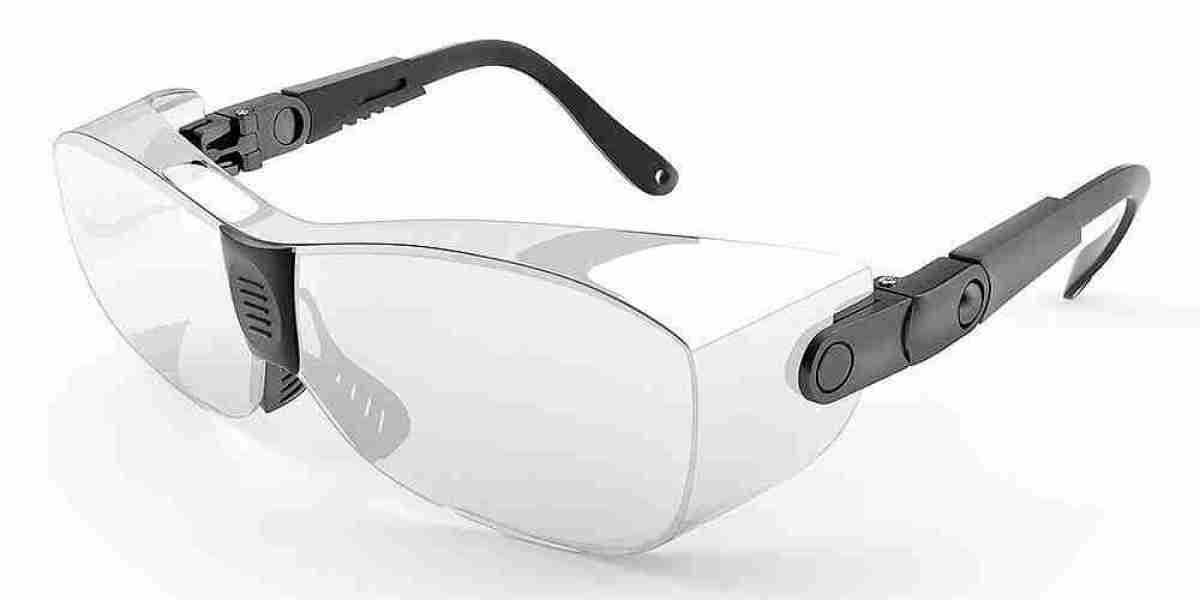The COVID-19 pandemic reshaped industries and worker safety protocols across the globe. With the world gradually returning to normalcy, industries are adjusting to new norms and practices, especially in the realm of workplace health and safety. The safety eyewear market is one sector that has seen significant transformations in response to the pandemic. As industries adapt to a post-COVID environment, the demand for personal protective equipment (PPE), particularly safety eyewear, is projected to continue growing due to increased awareness and regulatory changes.
This article explores the safety eyewear market in the post-COVID industrial landscape, focusing on emerging trends, challenges, and opportunities.
1. Market Overview
The safety eyewear market is an essential component of workplace safety, particularly in high-risk industries such as construction, manufacturing, healthcare, and laboratories. The outbreak of COVID-19 heightened awareness of the importance of personal protective equipment (PPE), driving a surge in the demand for face shields, goggles, and other types of eye protection. As businesses continue to embrace safety protocols in the post-COVID era, the eyewear market is expected to remain robust, with a projected market size reaching USD 4.18 billion by 2030, growing at a CAGR of 5.2% from 2024 to 2030 (openpr.com).
In addition to the ongoing need for eye protection in traditional industries, the pandemic has led to a surge in demand for protective eyewear in new contexts, such as healthcare settings dealing with infectious diseases, and industries looking to implement long-term measures against airborne viruses.
2. Post-COVID Industrial Transformation and Impact on Safety Eyewear
a. Increased Workplace Safety Regulations
The COVID-19 pandemic reinforced the importance of maintaining high levels of safety in workplaces. In response to the global crisis, governments and regulatory bodies introduced stricter safety regulations, particularly in sectors where workers were at higher risk of exposure to infectious agents or hazardous materials. This trend is expected to continue post-pandemic, leading to more stringent enforcement of PPE usage, including safety eyewear.
For example, industries such as construction, manufacturing, and healthcare are likely to continue implementing enhanced protective measures to safeguard workers' health. These measures will include not just face masks but also goggles and face shields designed to minimize exposure to pathogens, chemicals, and physical injury.
b. Adoption of Enhanced Protective Eyewear
In the post-COVID industrial environment, there is a growing demand for eyewear that offers more than just basic protection. The pandemic has increased focus on multi-functional protective gear, with workers requiring antimicrobial coatings, anti-fog lenses, and adjustable designs to ensure comfort and usability during long shifts.
Furthermore, technological innovations, such as smart eyewear equipped with augmented reality (AR) or heads-up displays (HUDs), are gaining traction in industries like healthcare, where real-time data and access to critical information can be essential during procedures. The pandemic has accelerated the adoption of remote diagnostics and virtual consultations, which in turn drives demand for more advanced eyewear solutions.
3. Key Drivers of Market Growth in a Post-COVID World
a. Ongoing Demand for Protective Eyewear in Healthcare Settings
Healthcare workers were at the forefront of the pandemic and continue to face significant risks, especially with the possibility of new viral strains or future pandemics. As a result, there is a sustained demand for protective eyewear, including goggles, face shields, and glasses, designed to provide adequate protection against infectious agents, airborne particles, and other hazards.
COVID-19-related innovations such as face shields integrated with disposable covers and anti-fog lenses are likely to remain popular, especially in hospitals and healthcare settings where high-risk activities (such as intubation and surgery) continue to require heightened safety measures.
b. Worker Protection Awareness Across Industries
The pandemic heightened awareness about worker safety across various sectors, not just in healthcare. Construction, manufacturing, laboratories, and even transportation industries have ramped up their focus on PPE to prevent exposure to airborne hazards, chemicals, and physical injuries. Many businesses, particularly in high-risk environments, are more likely to continue using safety eyewear to mitigate health risks, especially for employees working in environments with potential contamination from chemicals, dust, or viruses.
c. Evolving Worker Health Protocols
Many companies have adjusted their operations to incorporate regular health protocols, including temperature checks, disinfection practices, and PPE usage, into daily routines. This shift in how businesses operate post-COVID will likely have a lasting impact on PPE adoption, including safety eyewear. As a result, more businesses will invest in eyewear that offers superior protection and comfort for long-term use.
4. Technological Advancements in Safety Eyewear
a. Smart Eyewear and Enhanced Features
The post-COVID era is expected to see significant growth in the smart eyewear segment. Eyewear manufacturers are increasingly focusing on integrating technologies like augmented reality (AR), heads-up displays (HUDs), and real-time data streaming. These technologies help enhance the functionality of safety eyewear in environments where quick access to information is critical, such as during medical procedures, laboratory research, and even industrial operations.
Additionally, innovations such as anti-fog coatings, scratch-resistant lenses, and adjustable temples for customized comfort are becoming more standard in high-quality safety eyewear. These features make the eyewear more practical and comfortable for daily use, especially in environments that require long shifts.
b. Sustainable Eyewear Solutions
The pandemic has also raised concerns about environmental sustainability, which is reflected in the safety eyewear market. Post-COVID, there is an increasing demand for eco-friendly materials, recyclable lenses, and biodegradable frames. As businesses strive to reduce their environmental footprint, manufacturers are focusing on developing more sustainable eyewear options to meet these demands.
5. Challenges in the Post-COVID Safety Eyewear Market
a. Cost of High-Quality Eyewear
Although the demand for safety eyewear is high, the cost of advanced eyewear, especially smart eyewear with integrated technology, remains a barrier for some industries, particularly small and medium-sized enterprises (SMEs). These businesses may find it challenging to invest in advanced protective eyewear solutions, which could limit the growth of the market in certain sectors.
b. Supply Chain Disruptions
The COVID-19 pandemic exposed vulnerabilities in global supply chains, particularly in the PPE sector. Ongoing disruptions in supply chains could continue to affect the availability and pricing of safety eyewear, as manufacturers face challenges in sourcing raw materials and delivering products to market in a timely manner.
6. Conclusion
The safety eyewear market is set to thrive in the post-COVID industrial environment, driven by heightened awareness of health and safety, stringent workplace safety regulations, and growing demand for technologically advanced protective gear. As industries continue to evolve and new challenges arise, safety eyewear manufacturers must adapt to meet the increasing need for high-quality, comfortable, and innovative products. With the ongoing emphasis on worker safety and protection, the market for safety eyewear is expected to remain strong and expand in the coming years.




